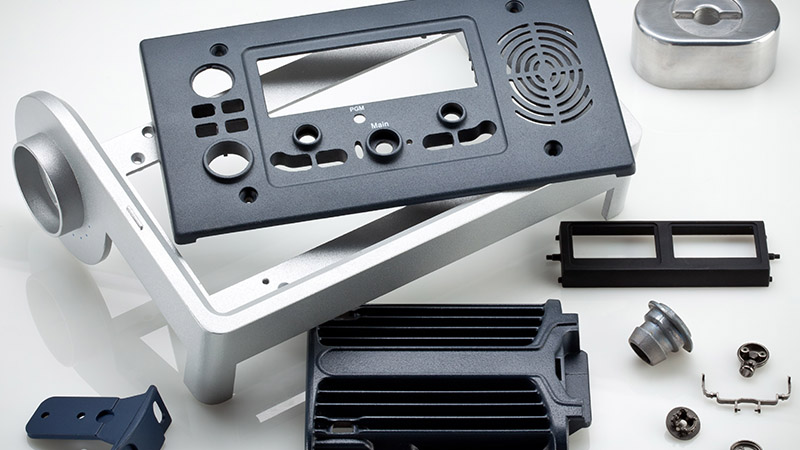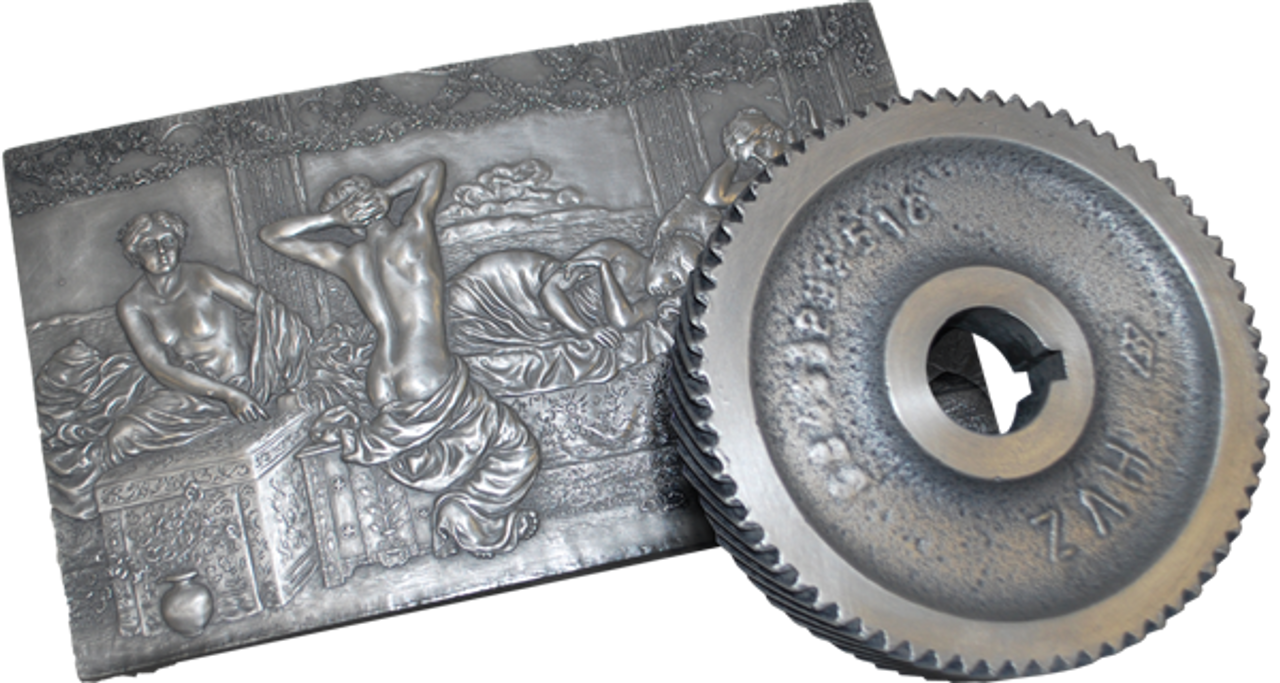Comprehensive Guide to the Uses and Manufacturing Techniques in Aluminum Factory Procedures
The extensive overview to aluminum foundry operations provides vital insights into the varied applications of light weight aluminum throughout numerous markets. It systematically analyzes crucial production methods, thawing procedures, and molding techniques that add to accuracy and quality. Additionally, the guide highlights the significance of ending up procedures that boost both mechanical properties and look. Comprehending these components is crucial for any individual associated with aluminum production, elevating questions concerning best practices and technologies in the area.
Review of Light Weight Aluminum Spreading Applications

Furthermore, the building and construction industry benefits from light weight aluminum spreadings in structural components and building elements, using durability and resistance to rust. Customer goods, such as kitchenware and home appliances, also use light weight aluminum castings for their warmth conductivity and aesthetic allure. The electronic devices industry depends on aluminum for real estates and heat sinks, ensuring efficient thermal administration. Overall, aluminum casting's flexibility allows it to meet diverse industry demands properly, strengthening its importance in modern-day manufacturing practices.
Key Manufacturing Techniques in Light Weight Aluminum Foundry
In the domain of aluminum foundry operations, numerous production strategies play a pivotal duty in forming the end products that offer varied sectors. Aluminum Casting. Secret methods include sand spreading, die casting, and investment casting, each offering unique advantages based on the application needs
Sand casting uses a mix of sand and binder to produce molds, enabling for intricate geometries at reduced expenses. Die spreading, on the various other hand, utilizes high-pressure injection of molten light weight aluminum right into steel molds, ensuring accuracy and a smooth surface finish, perfect for high-volume production. Investment spreading supplies exceptional dimensional precision and surface top quality, making it appropriate for elaborate designs.
In addition, strategies such as permanent mold and mildew casting and gravity pass away casting better boost the adaptability of aluminum factory procedures (Casting Foundry). Each technique is picked based on variables like manufacturing volume, part intricacy, and material buildings, making certain favorable end results throughout different applications
Thawing Processes and Temperature Level Control
Effective melting procedures and precise temperature level control are basic for attaining optimal light weight aluminum shop procedures. The melting of aluminum generally involves numerous techniques, consisting of crucible melting, induction melting, and rotary melting, each with its very own advantages and applications. Crucible melting is frequently made use of for small sets, while induction melting supplies efficient heating and uniform temperature circulation.

Molding Strategies for Precision Castings
Grasping molding methods is necessary for producing precision castings in light weight aluminum factory operations. Various approaches, such as sand, financial investment, and die casting, play an important function in accomplishing preferred tolerances and surface finishes. home Sand casting, as an example, uses a mixture of sand and binder to produce molds, enabling huge parts and elaborate layouts. Financial investment casting, on the other hand, makes use of wax patterns that are covered in ceramic material, resulting in highly described and exact shapes. Pass away casting employs high-pressure injection of liquified light weight aluminum into metal molds, guaranteeing consistent measurements and fast manufacturing rates.
Each technique has its benefits and is selected based on variables such as complexity, volume, and mechanical residential properties needed. Efficient mold and mildew layout, have a peek at these guys including airing vent and gating systems, better boosts the top quality and accuracy of the completed product. Recognizing these molding techniques makes it possible for shops to meet particular industry demands and boost overall operational effectiveness.
Ending Up Procedures to Enhance Aluminum Parts
Finishing procedures play a crucial role in improving the efficiency and looks of light weight aluminum components. These processes, which comply with casting, aim to enhance surface area quality, deterioration resistance, and mechanical residential properties. Common strategies consist of machining, which fine-tunes measurements and surface coating, and sprucing up, which enhances visual appeal by developing a smooth, reflective surface area.
Plating is one more substantial procedure, supplying a resilient oxide layer that protects versus wear and rust while enabling color personalization. Furthermore, powder coating offers a vast array of shades and surfaces, guaranteeing both defense and visual enhancement.
In some situations, parts may go through shot blasting to eliminate contaminations and enhance adhesion for succeeding finishes (aluminum metal casting). In general, these finishing processes are essential for making the most of the performance and life-span of light weight aluminum parts, making them suitable for varied applications throughout different markets
Regularly Asked Questions
What Precaution Are Necessary in Light Weight Aluminum Foundry Procedures?
In light weight aluminum shop operations, crucial precaution consist of individual safety equipment, correct ventilation, fire avoidance methods, routine tools maintenance, training for employees on threats, and maintaining clear emergency situation procedures to ensure a secure workplace.
How Do Environmental Rules Effect Aluminum Foundries?
Environmental policies significantly affect aluminum shops by applying standards for emissions, waste monitoring, and click site resource consumption. Compliance usually requires financial investments in cleaner innovations and procedures, ultimately influencing operational prices and manufacturing performance within the market.
What Profession Opportunities Exist in Aluminum Factory Operations?
Numerous occupation opportunities in light weight aluminum shop operations include duties such as foundry specialist, mold developer, high quality control inspector, procedure engineer, and production supervisor, each adding to efficient manufacturing and innovative procedures within the industry.
Just How Is Quality Assurance Achieved in Aluminum Spreading?
Quality control in light weight aluminum casting is accomplished with rigorous examinations, standardized testing procedures, and using advanced technologies. Normal monitoring of temperature, structure, and dimensional precision assurances products meet defined criteria and customer demands.
What Are the Common Issues in Aluminum Castings and Their Causes?
Typical defects in light weight aluminum spreadings consist of contraction, surface area, and porosity roughness. Reasons often originate from improper mold design, insufficient putting techniques, and contamination, impacting the general stability and efficiency of the end product.
The extensive guide to aluminum shop operations presents important understandings right into the varied applications of aluminum across various industries. Light weight aluminum spreading plays a necessary duty in numerous sectors due to its adaptability and positive homes. Die casting, on the other hand, employs high-pressure injection of liquified light weight aluminum right into steel mold and mildews, making certain accuracy and a smooth surface finish, perfect for high-volume manufacturing. In addition, strategies such as long-term mold and mildew spreading and gravity pass away casting additionally improve the convenience of light weight aluminum factory procedures. Mastering molding methods is important for producing accuracy castings in aluminum foundry operations.